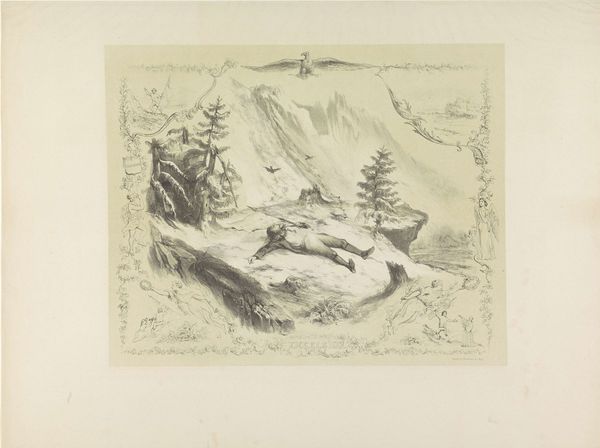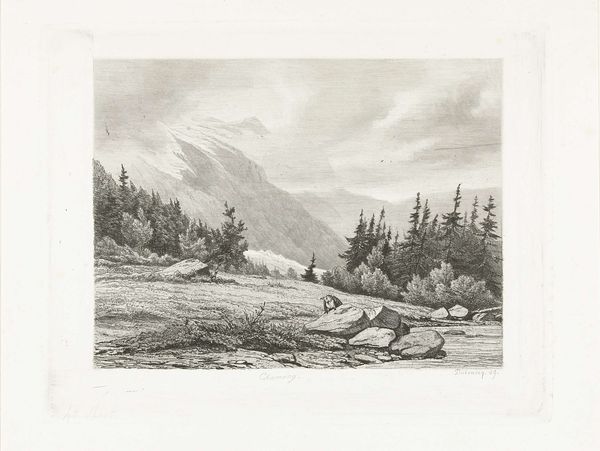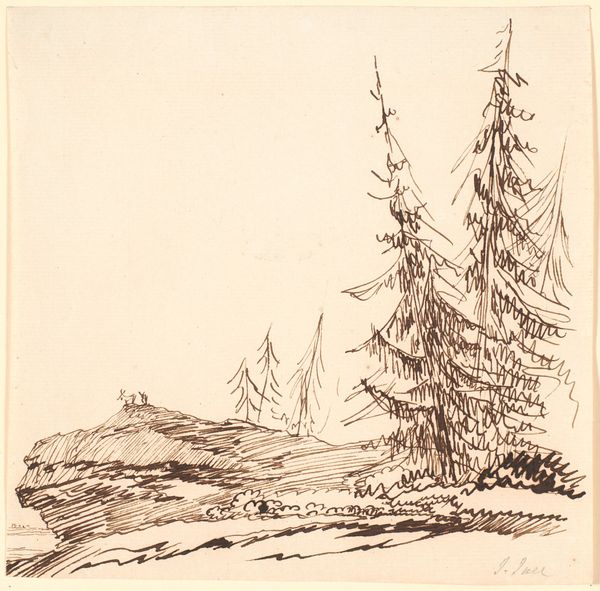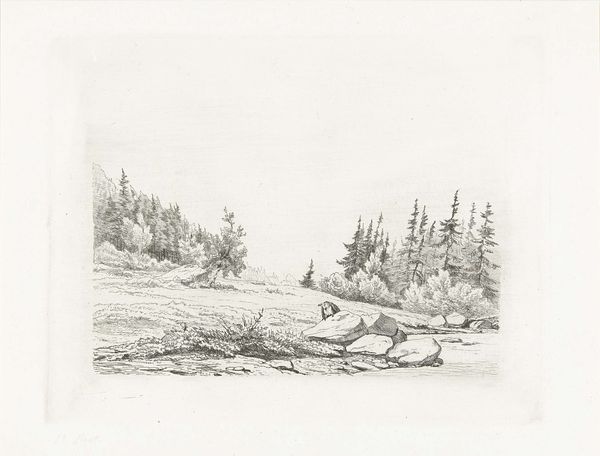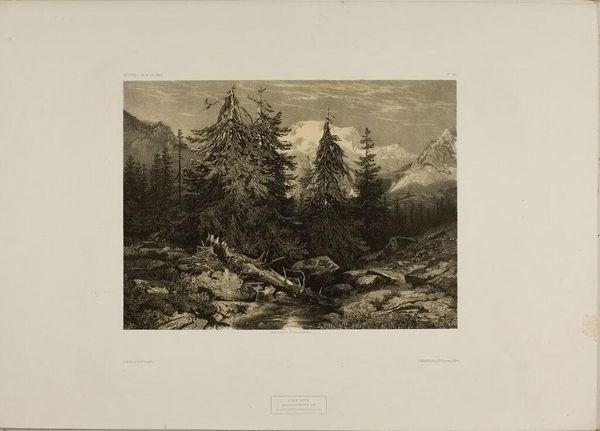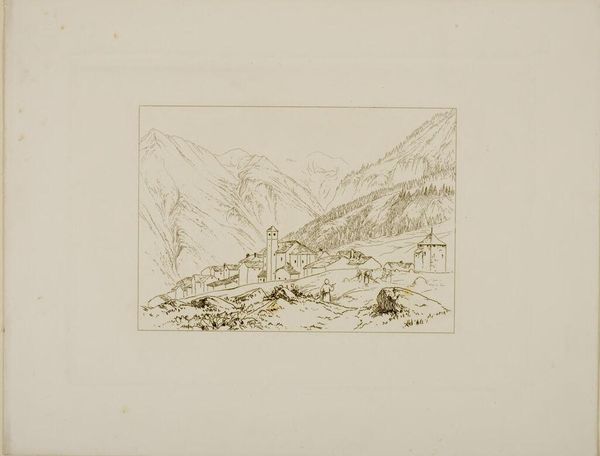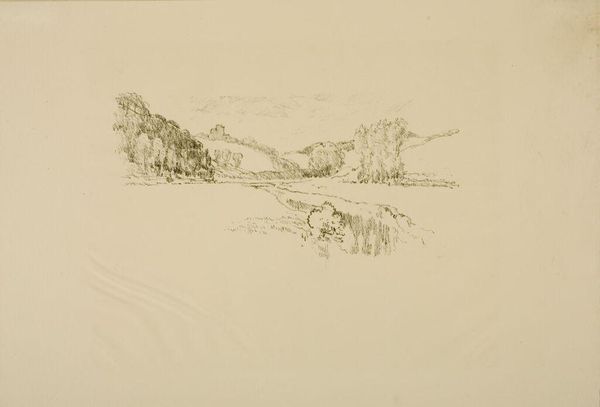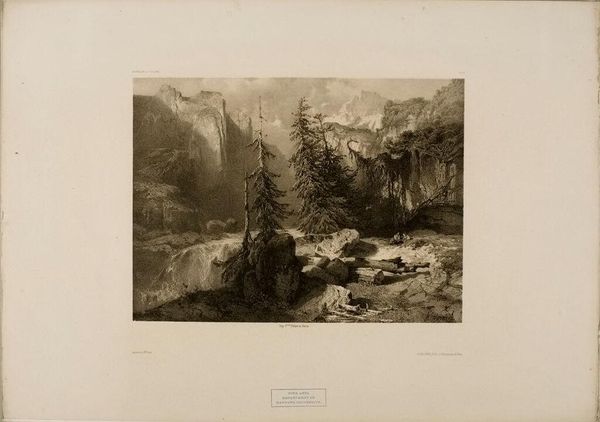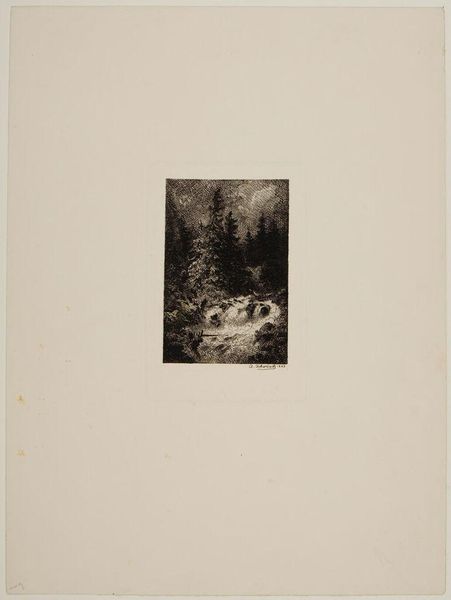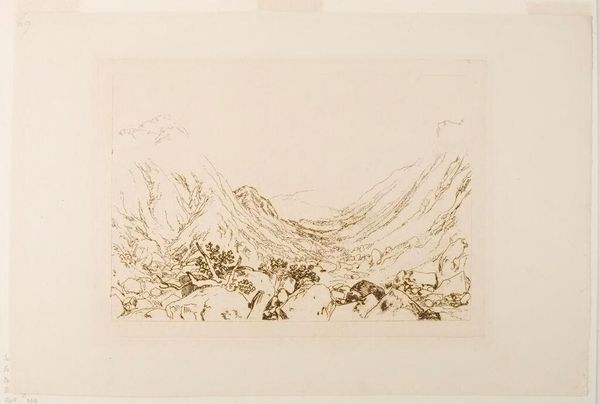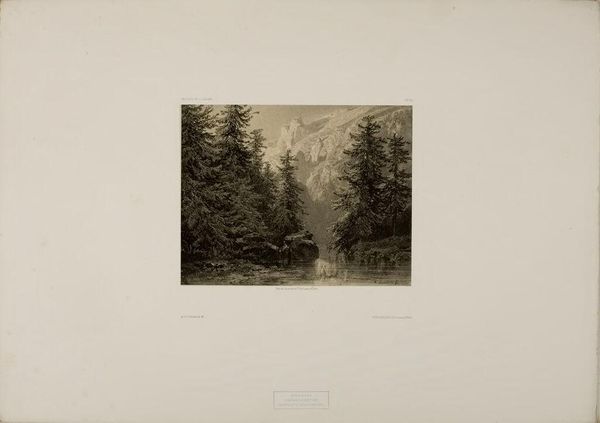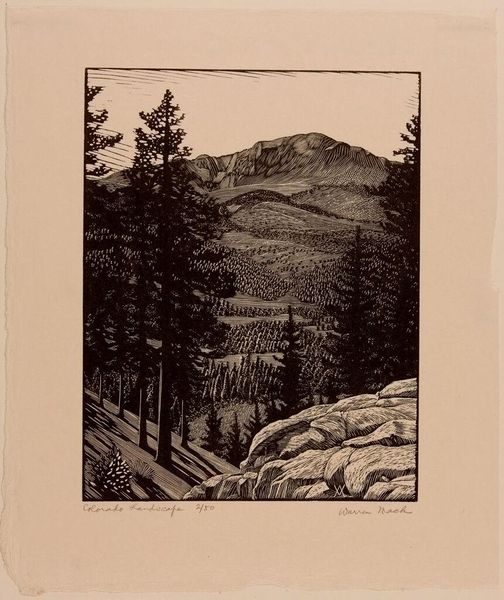
Copyright: CC0 1.0
Editor: Here we have Thomas Goff Lupton’s "The Source of the Arveron," an etching from the Harvard Art Museums. The fine lines create an almost ghostly scene of mountains and evergreens. How do you interpret this work in its historical context? Curator: Lupton lived during a time when landscape art became increasingly intertwined with national identity. These sublime scenes of nature, like the Arveron source, were exhibited publicly and played a role in shaping perceptions of both national pride and the power of nature, often romanticized in contrast to industrializing urban centers. How do you see the public reception of such work? Editor: I imagine it offered a powerful connection to a grand, untamed landscape, something increasingly distant for city dwellers. It seems a statement about the importance of the natural world in a time of progress. Curator: Exactly! It also begs the question: whose vision of nature was being promoted and whose was left out? Something to always consider when viewing art within its historical and socio-political moment. Editor: That is an insightful question, it helps me look at this artwork through a different lens.
Comments
No comments
Be the first to comment and join the conversation on the ultimate creative platform.
